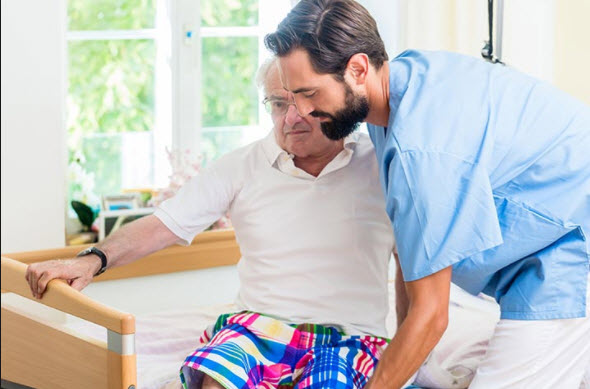Assisted Daily Living Help Necessary For 20% of Older Seniors
Assisted daily living (ADL) help is necessary for 20% of seniors, aged 85 and older, according to the latest statistics of the CDC.

Assisted Daily Living: Statistics
The finding by the CDC ( Centers For Disease Control) means that seniors aged 85+ are more than twice as likely as the 75 to 84 (8.5%) group, and more than six times as likely as the 65 to 74 group (3.4%) to need assisted daily living help.
Combining the data for all seniors, ranging in age from 65 to 85+, women were more likely than men to need ADL help.
Assisted Daily Living: What Is It?
These are routine activities that people tend do every day without needing assistance.
There are six basic ADLs: eating, bathing, dressing, toileting, walking, and continence. A seniors ability to perform these routine daily activities is important for determining what type of long-term care is necessary. The options are nursing-home care or in-home care. In addition, health coverage such as Medicare, Medicaid or long-term care insurance, needs to be determined.
Furthermore, nearly half of all Americans who turn 65 will eventually enter a care facility as a result of being unable to take care of themselves. While the majority of care facility admissions are short term (less than a year), about a 25% will stay longer than one year. Typically, health insurance cover a senior who is unable to perform at least two of the six basic assisted daily living activities.
Assisted Daily Living vs. Independent Living
Doctors and adult care social workers make their evaluations for assisted living based on the person’s ability to take care of themselves. Ability to do housework, prepare meals, shop, transport themselves, and take medication are assessed. Moreover, ability to understand their financial situation and handle money is key.
Assisted Daily Living: Assessing The Level
Available services are in-home, assisted living, or nursing home care. Another option is to start with in-home ADL nurses and then transition to an assisted living community.
Health insurance covers some or all of the cost of hiring licensed home health workers, depending on the person’s policy. Most licensed home health workers are state-certified nurse aides (CNAs). They help with a variety of activities such as shopping and taking medication.
